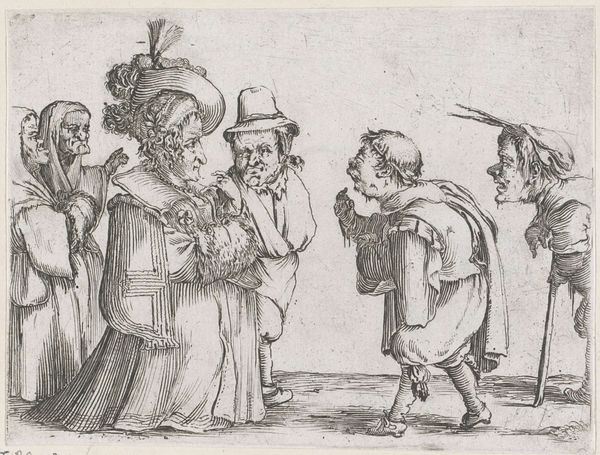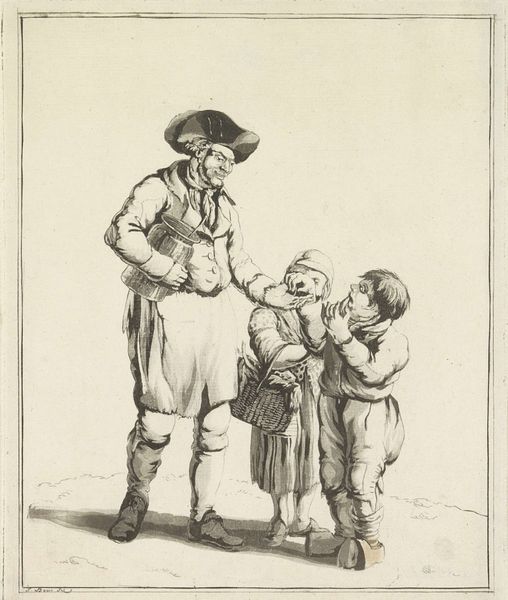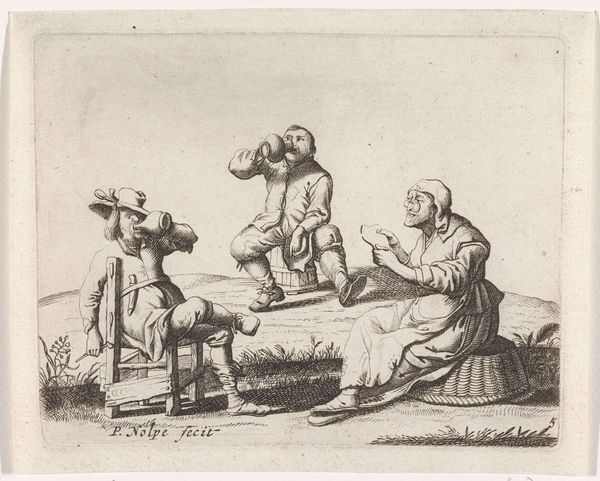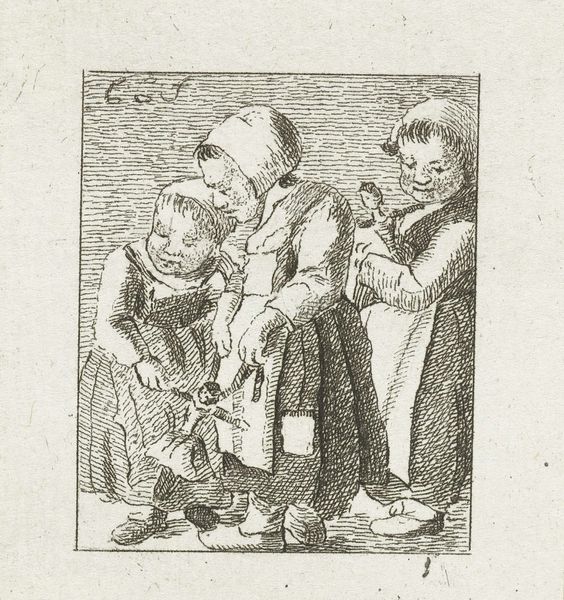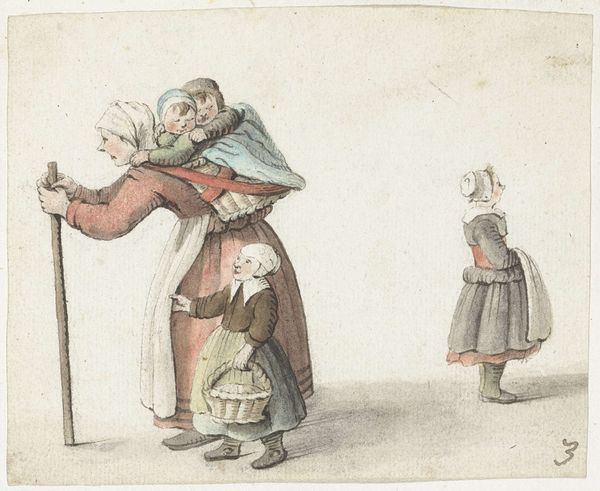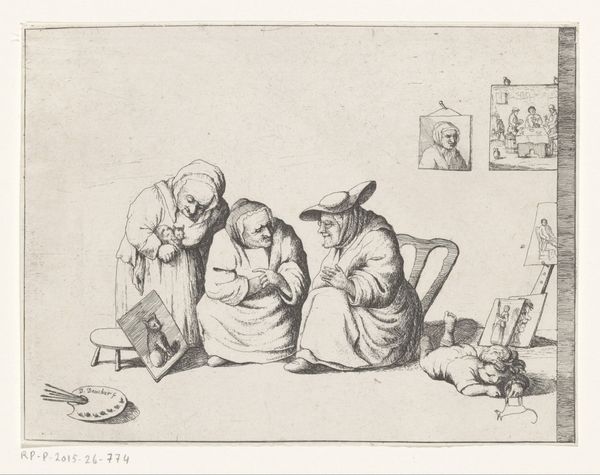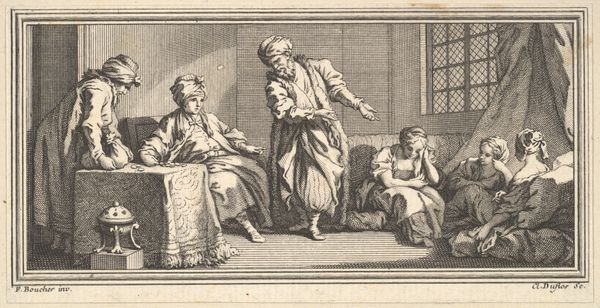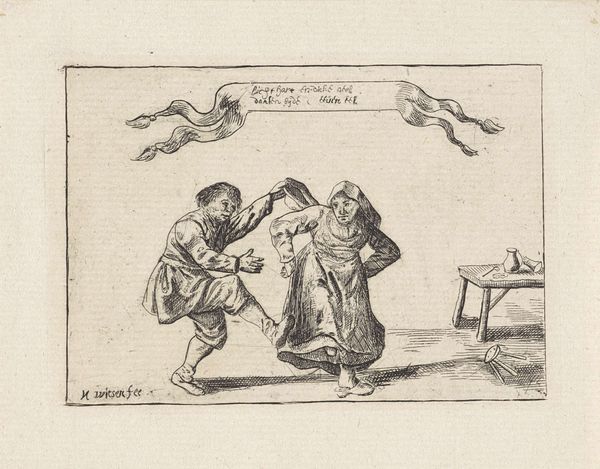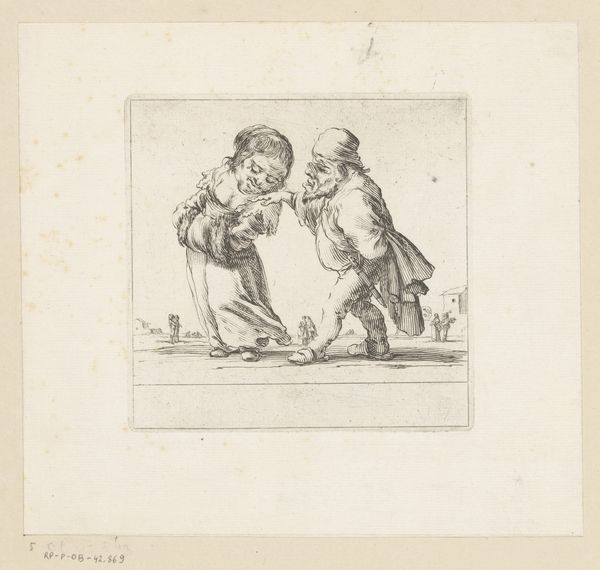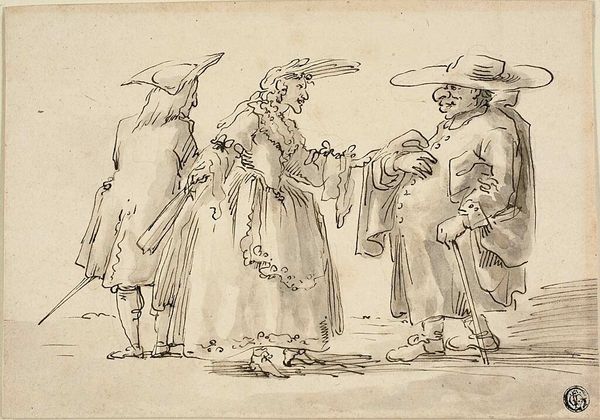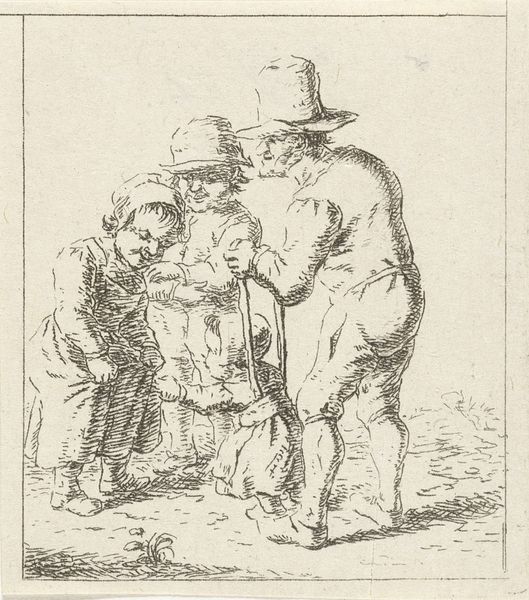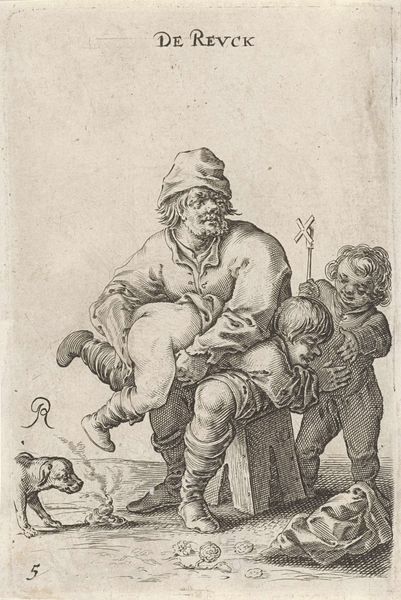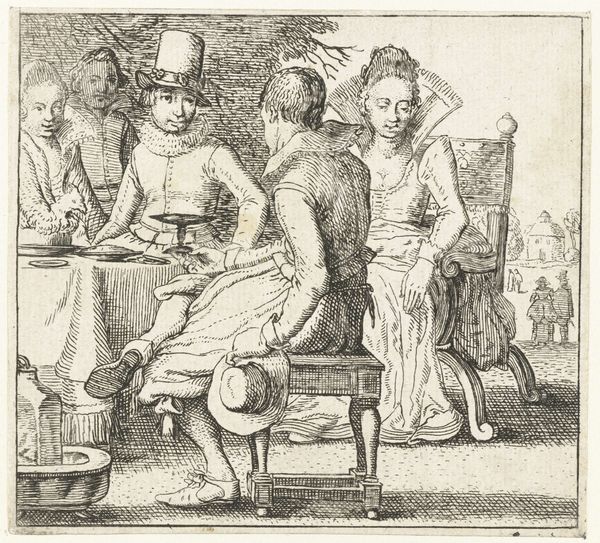
Dimensions: height 133 mm, width 167 mm
Copyright: Rijks Museum: Open Domain
Editor: So this is "Family with child in a baby walker", an engraving from 1766 by Hendrik Nieuwenhuysen. It feels like a really intimate snapshot of family life. What grabs me is the stark contrast between the crisp lines of the engraving and the messy reality of parenthood that's depicted. What's your take on it? Curator: Looking at the materials and the labor involved in creating this print, it really speaks to the social context of its time. Engravings like these were a form of mass media, making art accessible to a wider audience beyond the wealthy elite. Editor: So it's about democratizing art? Curator: Precisely! But consider also *how* that democratization occurs. The very act of reproducing and circulating images engages with emerging consumer culture. Think about the labor involved. How many prints could Nieuwenhuysen produce in a day? What were the economics of printmaking in the 18th century? This connects the image to a whole network of production and consumption. The seemingly simple family scene becomes intertwined with the mechanics of capitalism and the rise of a market for images. What is striking, or perhaps surprising, about how labor is portrayed? Editor: You're right, it's fascinating how this everyday scene is linked to such larger systems! It makes me think about how even personal moments are shaped by broader economic forces. Curator: Exactly. We need to see art not as isolated objects, but as products embedded in social and material relationships. Thinking about the material processes through which the print was made provides real insight, doesn’t it? Editor: Definitely. I'm leaving with a new appreciation for how prints like this reveal connections between family life, artistic labor, and the rise of consumer culture!
Comments
No comments
Be the first to comment and join the conversation on the ultimate creative platform.
